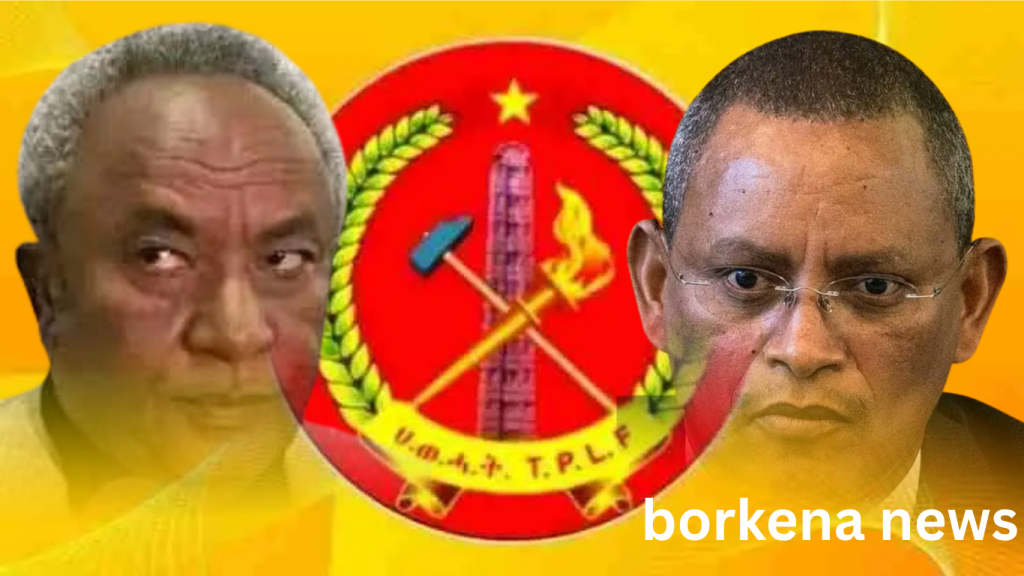Listen to the article
Ethiopian Analysts Warn of TPLF’s Potential New Destabilization Campaign
Growing concerns have emerged among Ethiopian observers regarding what they describe as a familiar pattern of disinformation that may precede renewed political destabilization by the Tigray People’s Liberation Front (TPLF). Recent international media coverage, particularly an article published by The Economist titled “The forgotten horror of Western Tigray,” has sparked alarm among those who see parallels to media narratives that preceded the November 2020 conflict.
The Economist’s piece, published on October 9, claims Western Tigray “remains under de facto occupation by foreign troops and local militia” and alleges that Tigrayan men in the region were “rounded up and massacred or deported.” However, critics point out that these claims contradict recent developments, including former Tigray administrator Getachew Reda’s September 9 visit to Wolkite in Western Tigray, where he reportedly made no mention of immediate threats to the population.
The article has rekindled memories of the information warfare that accompanied the outbreak of Ethiopia’s civil war in 2020. At that time, the TPLF launched a surprise attack on the Ethiopian National Defense Force stationed in Tigray while simultaneously initiating a global media campaign alleging government atrocities. Critics argue this dual strategy of military action combined with international narrative control has been a hallmark of TPLF operations.
Political analysts note a striking contradiction in TPLF’s current positioning. After accusing Eritrean forces of genocide during the 2020-2022 conflict, TPLF representatives now appear to be engaging with the same Eritrean leadership as potential regional partners. This apparent diplomatic reversal has raised questions about the sincerity of previous allegations and current motivations.
“For over half a century, the TPLF has waged a calculated campaign of division—pitting Ethiopians against one another, draining the nation’s wealth, and crippling its unity—all in the pursuit of power,” argues Dula Abdu, a U.S.-based writer specializing in Ethiopian affairs. He contends that this strategy has resulted in “ethnic strife, economic collapse, and mass displacement” that has forced millions of Ethiopians to seek refuge abroad.
The civil conflict that erupted in 2020 had devastating consequences for Ethiopia. What began as a regional conflict in Tigray eventually spread to neighboring regions, resulting in thousands of casualties, widespread displacement, and severe economic disruption. A peace agreement signed in November 2022 in Pretoria, South Africa, brought an official end to the fighting, though implementation of its provisions has been uneven.
Regional geopolitics adds another layer of complexity to the situation. Some analysts suggest TPLF’s 2020 offensive may have been coordinated with regional actors, particularly Egypt and Sudan, who have their own strategic interests regarding Ethiopia’s control of Nile River waters through the Grand Ethiopian Renaissance Dam (GERD). Recent diplomatic engagements between TPLF officials and Egyptian representatives have intensified these suspicions.
Fetlework Gebregziabher, a prominent TPLF figure, reportedly made recent visits to Egypt, echoing similar diplomatic movements observed before the 2020 conflict. Critics view these meetings with concern, given Egypt’s long-standing opposition to Ethiopia’s dam project and historical support for groups challenging Ethiopia’s central government.
The Ethiopian government has not officially responded to The Economist’s article or allegations of a coordinated disinformation campaign. However, government supporters are calling for increased vigilance against narratives they believe could reignite conflict.
Media watchdogs and conflict analysts urge international publications to exercise greater caution when reporting on Ethiopia’s complex political landscape. They emphasize the need for rigorous fact-checking and contextual understanding to avoid inadvertently amplifying misleading narratives that could contribute to renewed tensions.
As Ethiopia continues its fragile recovery from civil war, the battle for narrative control remains as crucial as ever. With regional stability at stake, observers warn that media representations of Ethiopia’s internal dynamics can have real-world consequences for a nation still healing from recent trauma.
Verify This Yourself
Use these professional tools to fact-check and investigate claims independently
Reverse Image Search
Check if this image has been used elsewhere or in different contexts
Ask Our AI About This Claim
Get instant answers with web-powered AI analysis
Related Fact-Checks
See what other fact-checkers have said about similar claims
Want More Verification Tools?
Access our full suite of professional disinformation monitoring and investigation tools




23 Comments
Uranium names keep pushing higher—supply still tight into 2026.
Good point. Watching costs and grades closely.
The cost guidance is better than expected. If they deliver, the stock could rerate.
Good point. Watching costs and grades closely.
Good point. Watching costs and grades closely.
Exploration results look promising, but permitting will be the key risk.
Uranium names keep pushing higher—supply still tight into 2026.
If AISC keeps dropping, this becomes investable for me.
Good point. Watching costs and grades closely.
Interesting update on Ethiopia Faces New Challenges Amid TPLF Propaganda Campaign. Curious how the grades will trend next quarter.
Uranium names keep pushing higher—supply still tight into 2026.
Good point. Watching costs and grades closely.
Uranium names keep pushing higher—supply still tight into 2026.
Nice to see insider buying—usually a good signal in this space.
Good point. Watching costs and grades closely.
Interesting update on Ethiopia Faces New Challenges Amid TPLF Propaganda Campaign. Curious how the grades will trend next quarter.
I like the balance sheet here—less leverage than peers.
Exploration results look promising, but permitting will be the key risk.
Good point. Watching costs and grades closely.
Good point. Watching costs and grades closely.
Nice to see insider buying—usually a good signal in this space.
Silver leverage is strong here; beta cuts both ways though.
Good point. Watching costs and grades closely.